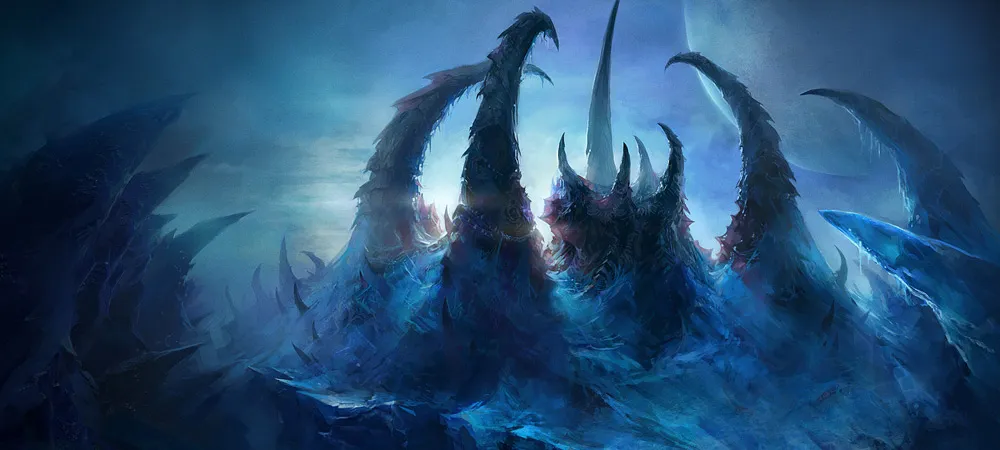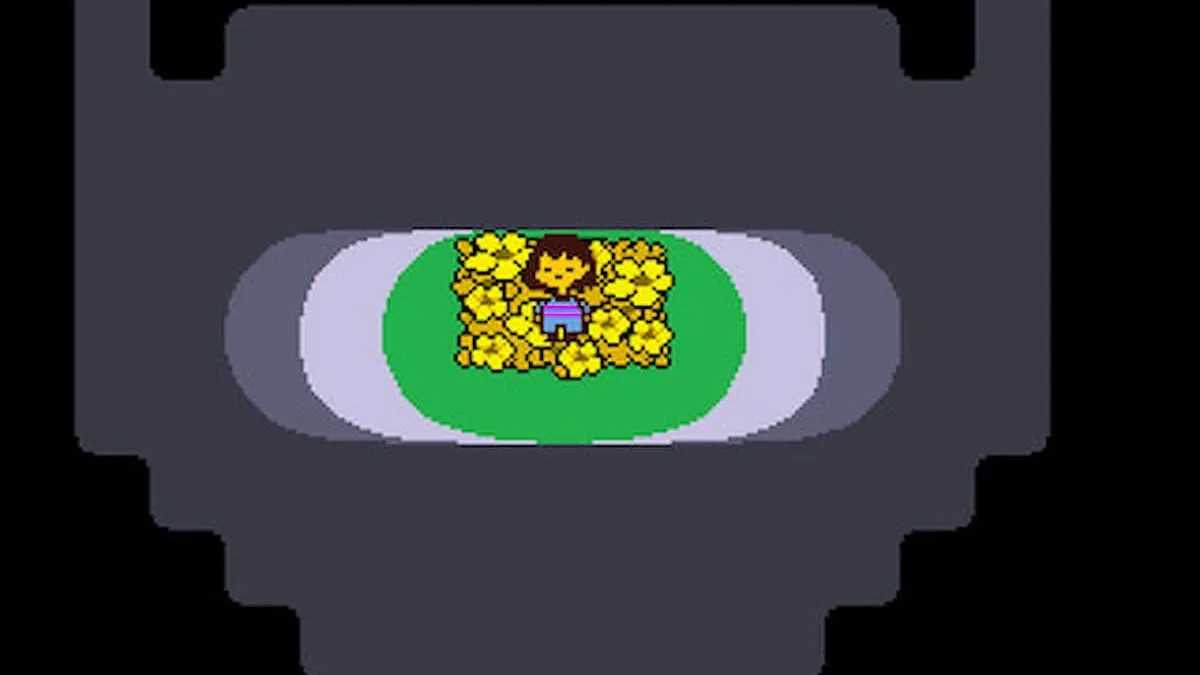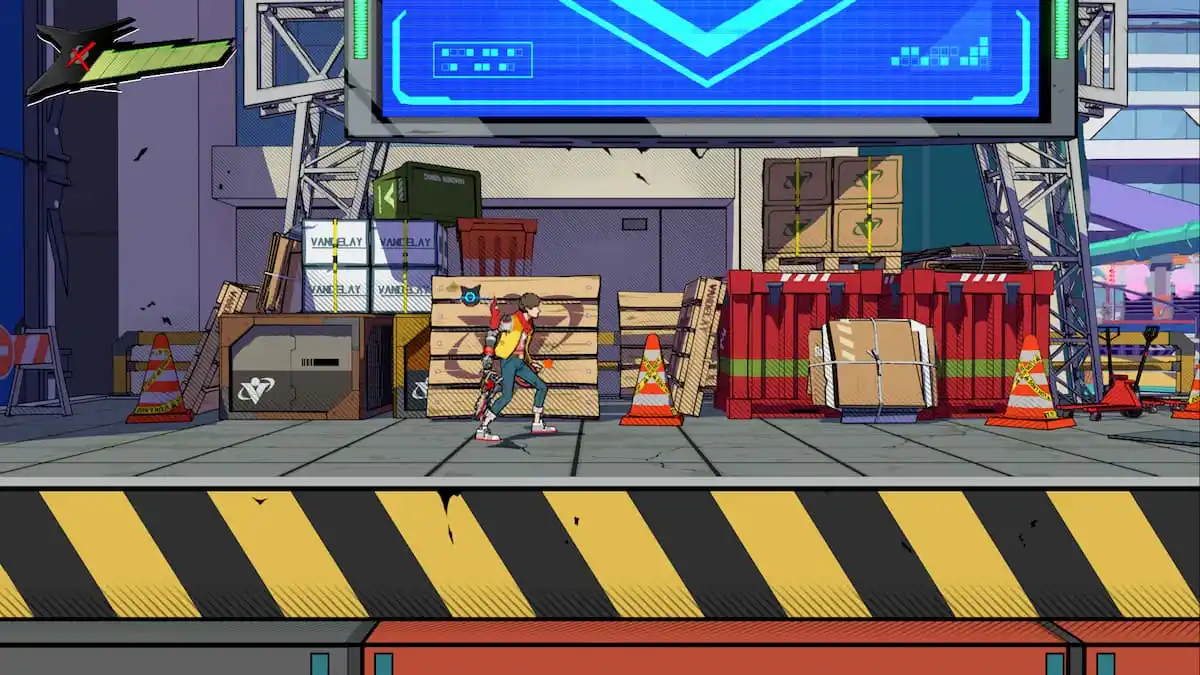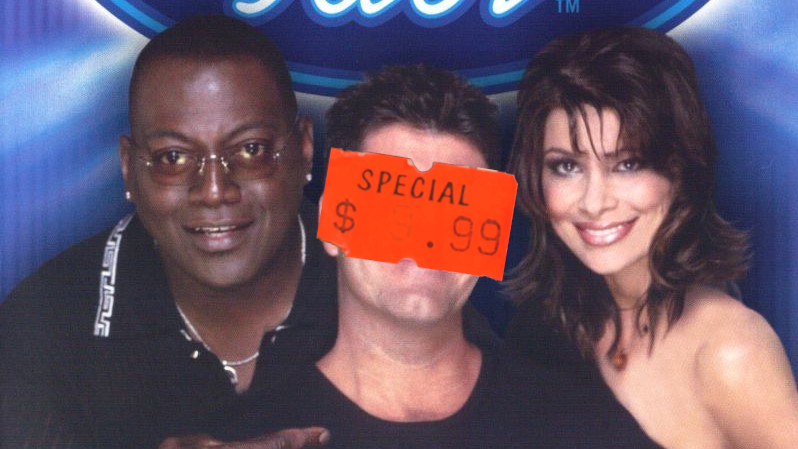Over 20 minutes of exclusive audio mixes included
Maybe you played StarCraft II: Heart of the Swarm. Maybe you enjoyed the soundtrack disc that came packed in with the collector’s edition, or perhaps you simply enjoyed it in-game. With this expansion focusing on the Zerg, I was most looking forward to this installment in terms of its music, and it didn’t disappoint as you can read in our soundtrack review.
We’ve had the opportunity to pull together the key players on the StarCraft II audio team, including six composers and the lead sound designer. They’ve all provided exclusive audio samples that you can hear below via our SoundCloud, explaining what you’re hearing while giving us insight into the behind-the-scenes work and thought processes that went into the game’s impressive soundscape.
Check it out below and let us know what you think of StarCraft II: Heart of the Swarm’s music!

Glenn Stafford (Blizzard Entertainment)
Role: Audio Lead / Composer
Selected Past Works: WarCraft II, StarCraft, World of Warcraft series, Diablo III
On being the “Terran” guy and leading the StarCraft II sound team
“Yes, you’re probably right that I’m most known for the StarCraft terran music—but players seem to like it, so I suppose that’s a good thing! It may not be as well known that I do work regularly on other Blizzard series. For example, I composed well over an hour of music for Diablo III, and I contribute to World of Warcraft expansions and patches whenever possible. In fact, Jason Hayes and I collaborated on some tracks for patch 5.2, which came out recently.
With that in mind, I’ve always considered the StarCraft team to be my home base here at Blizzard. While I enjoy all our games and franchises immensely, the RTS series of games is what I love and play the most. I previously supervised audio production and composed for Wings of Liberty, and following that narrowed my focus to music. For Heart of the Swarm, it seemed a natural progression for me to continue supervising the music production.
It was very refreshing to explore new sonic territory, and I was also grateful to have Derek Duke onboard to help us evolve the zerg sound he first created for the original StarCraft. We worked closely together, discussing musical ideas that seemed unique to the zerg, and we also took advantage of a variety of Derek’s incredible eclectic and vintage gear to record strange new sounds and source material. We then both used these ideas and material as a basis from which to create more music.
For the in-mission music in this expansion, our goals were to add as much new music as possible, and to evolve and expand on the zerg sound for use in different settings—primal jungles, ice planets, and so on. The zerg conform to different rules, and it might be tempting to be too musical where it isn’t called for. It’s also a big challenge to address how the music might sound in these various settings. Heart of the Swarm focuses mainly on the zerg, of course, but there are forces at play throughout the missions too. At times, you’ll notice various combinations of different racial influences in the music—maybe something not altogether zerg or terran, but exploring the spaces in between.
In terms of what’s changed since Wings of Liberty, beyond the obvious changes in focus and style, we added more music than we’ve ever added to an RTS expansion. In the missions, there are more custom-scored and edited moments than ever before, with plenty of cut scenes and in-game cinematics, as well as some complex music-handling throughout missions. Having more music to work with overall, and by refining our tools and implementation methods, we can greatly extend the possibilities and refine the presentation—offering a more variable and interesting music experience when playing and re-playing missions and multiplayer maps. Even the loading-screen music has more variation now.
We were fortunate enough to have Neal Acree on board once again, not only taking on the hard-hitting cinematic scores, but also adding to our in-game arsenal with new themes and variations on cinematic scores. Russell Brower reprised his role from Wings of Liberty, composing new protoss tracks as well as mission music, including some patriotic themes that come into play later in the game. Add to that some edgy tracks by veteran freelance composer Cris Velasco; and with the return of Blizzard composer Jason Hayes late in production, we even have an unexpected collaboration between he and Russell.
The sound design team, supervised by industry veteran sound designer Evan Chen, brought some amazing new talent and sound design work to the StarCraft universe. I’m honored to work with such a talented group, and thankful for everyone’s unique skills and perspectives. The result is a diverse blend, and yet and it all stays true to the StarCraft universe.
The music for this expansion is unique and moody. You won’t hear many big epic themes and soaring moments—but we believe it represents the essence of this expansion and the zerg well. We sincerely hope everyone enjoys it.”
On his exclusive audio sample
“This is a medley of a few different pieces. Up to about 50 seconds, this is a piece for a mission cut-scene involving Kerrigan and some terrans. There are two versions of this piece in the game—one without any drums and guitars, which completely removes the terran flavor. The next section up through 1:40 features legendary guitarist David Torn, who Derek and I were fortunate enough to have perform on several tracks. Following that, we hear a more strictly zerg-influenced track until about 2:40, where we revive one of the mission themes from Wings of Liberty, now recorded and remixed with a live orchestra. Then at 4:20, we wind down with a small sample of a piece designed for Kaldir, an icy moon where Kerrigan encounters the protoss.”

Derek Duke (Blizzard Entertainment)
Role: Composer
Selected Past Works: StarCraft series, WarCraft III, World of Warcraft, Diablo III
On being the “Zerg” guy and his contributions to Heart of the Swarm
“Helping Glenn out with this one was a lot of fun. With so many other composers dipping into zerg territory, it really forced us to clarify a lot of what’s at the heart of zerg music. Glenn wanted to build off of the Queen’s theme, as heard in the zerg rollout trailer and in various incarnations in Liberty. Sharing certain scales and chord voicings that are particular to the zerg was also cool. It’s not always just strange sounds and textures that make zerg music.
We spent time each week for a while specifically creating zerg music textures and source at my home studio, using all means of analog and digital music paraphernalia… analog modular synths, vintage synths and hardware effects, alternate controllers, and so on. We got some great ‘music design’ source material from those sessions.
We were also able to expand upon the electric guitar vocabulary. We had the opportunity to involve guitarist and composer David Torn, who has a very unique and extraordinarily musical approach to the guitar. In contrast to the guitar and Dobro stylings used in Wings, David was in our ‘infested’ guitarist.”
On his exclusive audio sample
“This comes from a piece called “Corruptors,” written for the Skywalker Symphony Orchestra and David Torn. You’ll hear the zerg Queen’s theme featured and various nods to the zerg music from the original StarCraft. I was unable to attend the session—always a challenge—so having conductor Eimear Noone there at the podium worked out great for the music. She had also conducted for Wings, and really ‘gets’ a lot about my musical language.”

Russell Brower (Blizzard Entertainment)
Role: Composer / Audio Director of Blizzard Entertainment
Selected Past Works: World of Warcraft series, StarCraft II, Diablo III
On his contributions to Heart of the Swarm
“Since Glenn Stafford founded the Blizzard sound department and, along with Jason Hayes and Derek Duke, defined the sound and musicscape of StarCraft and StarCraft: Brood War, my own musical responsibility—as the “new guy,” relatively speaking—continues to focus on staying true to the series’ roots wherever I have influence, and to suggest ways to evolve things where it makes sense in context. As composers, we also strive to cast ourselves into roles that are the best fit for our individual strengths. In the end, every Blizzard game to date contains the art of multiple composers—I believe this is part of the ‘secret sauce’ that makes Blizzard’s music and games timeless.
For instance, on StarCraft II: Wings of Liberty, I had the opportunity to write a couple of themes that covered new territory or expanded character development: specifically, melodies for Jim Raynor, Zeratul, and the ‘space opera’ main title piece, which was a special request from Chris Metzen. I also had a hand in suggesting that we add to the terran music vibe with virtuoso, legendary live players—Tony Levin, Jerry Marotta, Jesse Gress, and others. The terran musical composition, production, and DNA, however, are 100% Glenn, and stay very true to StarCraft tradition. In fact, the majority of the Wings score was written by the original StarCraft composition team; I wrote what made sense for me to write, and wore my administration hat for the rest of that project.
This brings us to StarCraft II: Heart of the Swarm: With the focus squarely on the zerg, Glenn and Derek built on their established musical vocabulary, as they’ve described, and created a spine-tingling score… and that’s really the heart of this particular musical swarm.”
“My musical contributions to Swarm happened in two waves. During the earliest recording sessions, the Skywalker Symphony Orchestra was so good, we realized that we were going to run out of music to record before the sessions were over, and it was too late to cancel the unneeded time. Gasp… ka-ching! This afforded me an awesome opportunity and challenge: I wrote about six minutes of additional music to leverage the remaining session time, with the clock ticking, in the control room—all while Neal Acree’s cinematic scores were booming live over the speakers. With pencil, paper, and an iPad piano sound in headphones, I wrote fast and furious during the sessions. No pressure! I’m proud of those two pieces, affectionately and nonsensically titled ‘Zergs in the Banana Patch’ and ‘The Protoss Take Kiev.’ These cues found their way into some of the later missions, and, yes, they’re big and loud… I couldn’t waste a world-class 87-piece orchestra!
As the later missions’ gameplay matured, we found some opportunities for additional music, to which I contributed. Jason had rejoined the team by then, and he and I finally got to collaborate in person, on purpose, after all these years. A personal highlight is a piece called “Overdrive,” which was composed and produced by Jason and arranged for orchestra by me from his piano demo—It was such a blast to truly create something together. That experience pretty neatly sums up why I find Blizzard to be such a unique place to work, collaborate, and create.”
Jason Hayes (Blizzard Entertainment)
Role: Composer
Selected Past Works: StarCraft, WarCraft III, World of Warcraft

On his return to Blizzard Entertainment
“Being back at Blizzard is like coming home for me—I couldn’t be more thrilled! And yes, it was especially exciting to arrive during the final push on Heart of the Swarm. Working on StarCraft again is so cool.”
On his exclusive audio sample
“I came up with the idea for ‘Overdrive’ while thinking of the past between Arcturus Mengsk and Kerrigan—his unquenchable thirst for power, and hers for revenge. As I was coming up with ideas, a musical theme from StarCraft: Brood War occurred to me. This was in the intro cinematic, where Admiral DuGalle abandons a group of confederate colonists to be overrun by the zerg. There seemed to be a symmetry between this and Kerrigan’s situation—after all, she was also abandoned to the zerg by Mengsk.
I found that by taking this musical idea and punching it up with a militaristic insistence, it could help to frame some important events to come. Collaborating with Russell on the arrangement was a lot of fun—after years of indirect collaboration with him on a number of pieces, it was great to work with him in person.”

Neal Acree
Role: Composer
Selected Past Works: World of Warcraft series, StarCraft II, Diablo III
On being the king of cinematics and contributing in-game tracks as well
“First of all, it was an absolute thrill to be involved in helping tell the continuing story musically through the cinematics. So many talented people put their hearts and souls into making them what they are, and getting to write music to that is a dream come true. What made it even more fun is that the story runs the gamut of emotions and stylistically asked for some very different things from I had done before. I felt a huge responsibility in taking on the cinematics, but it was ultimately a lot of fun and I’m really proud of the final result. Getting to work with the Skywalker Symphony Orchestra and choir was a thrill as always. They are some of the best musicians in the world, and I never get tired of recording there. I wouldn’t say we did anything too wild with the orchestra but we did hire an extended low brass section for an absolutely massive sound. See if you can spot those moments in the soundtrack.
As for in-game music, I had done a bunch for World of Warcraft: Cataclysm and Mists of Pandaria, so I was familiar with the process, which is quite different than writing for the cinematics. Though I very much enjoy the process of writing to picture, writing without it can be a very freeing experience. Writing for the cinematics takes a lot longer because the music tends to evolve as the cinematic evolves due to the collaborative process. This can result in some really cool stuff that none of us had necessarily envisioned when we started out. In the case of Heart of the Swarm, Glenn wanted me to write some in-game music that would incorporate some of the stylistic and thematic DNA of the cinematics, which was a lot of fun. I got to blend a lot of orchestra with synthesizer and get really experimental, which is the most fun part for me—there’s definitely a lot of zerg-specific stuff in there.”
On his exclusive audio sample
“This is a standalone version of a theme written for Kerrigan and Raynor that underscores some of the cinematics in Heart of the Swarm. It’s a slow-building piece that is somber and tragic with an epically heroic yearning… I hope that’s not reading too much into it. It’s not your typical love theme, but this isn’t your typical love story. My inspiration for it was the story and the characters who have a lot going on beneath the surface. It was really cool to be able to write something like this for a game. It also features vocals by Laurie Ann Haus, who was a big part of the Kerrigan sound on both Wings of Liberty and Heart of the Swarm.”

Cris Velasco
Role: Composer
Selected Past Works: God of War series, Darksiders, Borderlands series, Soul Calibur V
On being brought on to contribute to Heart of the Swarm and his love for StarCraft
“StarCraft is one of my all-time favorite games. I cannot even begin to count the number of hours I put into the original one. A couple of friends and I used to pull all-nighters, just building our units up, and then having a massive 3-way battle that would ultimately crash the computers. So even though I didn’t have a huge role this time around, I still consider it one of my favorite projects to work on simply because I couldn’t believe how amazing it was to be writing music for this franchise.”
“Writing for the zerg let me be really experimental with my music. There was a definite dark slant to it, although not necessarily horror. I did some fun things like taking the sound of an insect, slowing it way down, pitching it down a few octaves, and then using it as a percussion bed. Another fun one was taking the sound of a heartbeat, reversing the sound, then lowering the pitch again and adding a touch of distortion. I used this sparingly as a percussive hit. These kinds of things felt in line with how creepy, weird, and insectoid the zerg are.”

Evan T. Chen (Blizzard Entertainment)
Role: Sound Design Lead
Selected Past Works: Diablo III, Starhawk, Killzone 3, Dawn of the Dead, Futurama
On the scale of StarCraft II’s sound design and the unsung heroes who undertake it
“I’m just one of many sound designers on this project. The other members of the StarCraft audio team did all of the heavy-lifting with the support of the audio department at Blizzard and a myriad of other amazing talent. Here’s a sound design montage that offers a glimpse of our collective work, which includes contributions from sound designers Jonas Laster, Ed Cerrato, Pedro Seminario, JP Walton, Paul Menichini, and Alex Ephraim.
I’m relatively new to Blizzard and started on the project fairly late in the game, so a big challenge was acclimating to this new environment in a way that respected the legacy of Blizzard, the StarCraft series, the aesthetic precedence of Wings of Liberty, and what had already been created for Heart of the Swarm… while simultaneously trying to chisel a unique and appropriate sonic thumbprint. Collaborating with the StarCraft development team in creating the soundscape was fantastic because they embraced our ideas and helped us achieve them—there are so many development team members not directly on the audio team that play crucial roles in what the player hears, including producers, programmers, data specialists, technical gurus, and—naturally—all of the artists and animators.
One memorable moment involved a request to have a visual for the Medivac’s new ability, Ignite Afterburners, added to complement the sound of them turning on. I made the case that the audio by itself was too disconnected and might easily be misunderstood during gameplay without some sort of associated visual. This was extremely late in the development, so every possible addition needed to carefully considered, but I heard back later that my argument helped pushed the case for this late addition through. It just goes to show how everyone’s instincts as a player are valued here, and that there are many ways to contribute outside of your immediate responsibilities.
We also made lots of under-the-hood improvements in audio. There’s better headroom and dynamic range now, meaning things can get louder when needed without distortion. We completely revamped the dialog-processing workflow. We also improved the automatic mixing parameters and did more scripted mixing in-mission, which all translates into being able to hear important things more clearly and distinctly. It used to be when certain objectives were completed in a mission, everything would often happen simultaneously: lots of things would explode, the Objective Complete stinger sound would play, other sounds would be ducked to make room for this stinger, new dialog would announce your next objective, music would change, you’d get an achievement alert. In extreme situations, this can be pretty incoherent. We did a lot more sequencing so things don’t happen all at once but rather more serially for the sake of sound, to let the audio breathe and be more informative and emotionally satisfying.
There were plenty of other sound-related challenges, too. We had several big boss fights, and we did some epic, bombastic sounds for those. We introduced a new physics system into the game, so designing a tasteful, uncluttered sound system for that was a challenge. There were nearly 100 non-prerendered, in-engine cinematics to edit and mix, and we strived to make them sound as good as the prerendered ones. We also made more use of the audio engine’s DSP effects, so you’ll hear a wider variety of reverb and real-time filtering in this game. We took more advantage of surround-sound speakers systems too, and those with the equipment will hear some specific spectacular moments in the LFE channel and the surrounds.
As far as subtlety goes, some of the world ambient sounds are more detailed, layered, and peppered with perspective and depth, and in general, our philosophy was to make the sounds feel more ‘in the world.’ Finally, listen carefully to Swarm hordes—I won’t give too much away, but suffice it to say, this is just the tip of the iceberg for this tech. There are also some great audio easter eggs to find, but you won’t hear them—pun intended—from me!”




